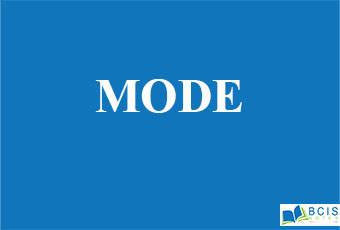
Mode
It is also the major measure of central tendency. The dictionary meaning of the term mode is ‘most used’. Thus it is the value, which occurs more often or with the greatest frequency.
It is suggested for the average of ideal sizes, pocket money and also for open-end classed. Those varied values that repeat the maximum number of times in a set.
It has two main advantage:
- It does not require any calculation, as it involves counting.
- It can be used for qualitative as well as quantitative data sets.
Merits
- It is easy to calculate and simple to understand.
- Sometimes, it can also be located by inspection.
- It can also be estimated graphically from a histogram.
- It can also be suggested for open-end classes for most repeated value.
- It is not disturbed by the largest and smallest observations.
Demerits
- It is ill-defined i.e. not rigidly defined.
- It is not based upon all the observations.
- It is not suitable for further mathematical calculations.
- It is affected by the fluctuation of sampling.
For Discrete Series,
The mode is the corresponding value of varied of maximum frequency.
For Continuous Series,
![]()
Where,
l=Lower limit of modal class
f1=Frequency of modal class
f0=Frequency of the class preceding the model class
f2=Frequency of the class following the model class
h=Size of the class
Empirical Relation Between Mean, Median, and Mode
Mode = 3Median – 2Mean
![]()
You may also like: Partition Values

Leave a Reply